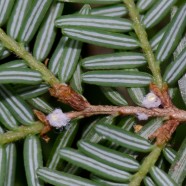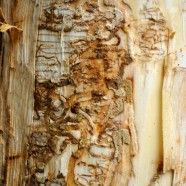HWA Here to Stay?
It’s official friends, HWA has been found in Chautauqua County. Over the holidays, Hemlock Woolly Adelgid (HWA) was encountered on a number of Eastern Hemlock trees (Tsuga canadensis) near Fredonia. These trees exhibited the signs and symptoms of the invasive insect’s presence, having twigs covered in white woolly masses and dying needles, discolored due to loss of nutrients. Due to its small size and discrete nature, HWA can easily go undetected until it is too late, and death of the attacked hemlock is inevitable. However, it CAN be stopped and we CAN help the hemlocks...
Read MoreEarly Signs of Emerald Ash Borer
At about the size of a tic-tac, the Emerald Ash Borer (EAB) doesn’t seem like it could possibly do much harm; however, its size allows its invasion to often go undetected. The ash borer is a non-native wood boring beetle that is capable of causing thousands of dollars of damage to ash trees, which make up 10% of New York’s forest and are favorable for planting along street sides in urban centers and towns. With an invader that is so small and with so many trees, how is it possible to detect this unwelcome bug? Knowing the signs and symptoms can help catch this intruder early in...
Read MoreDowny Woodpecker (Picoides pubescens)
Downy Woodpeckers (Picoides pubescens) are a common sight in the region and can typically be seen hammering away at the bark of a tree, attempting to uncover a nice juicy larval insect. These woodpeckers aren’t terribly picky, and have recently been found to munch down Emerald Ash Borer (EAB) larvae, an invasive species of beetle attacking ash trees. As EAB has spread throughout several states, scientists have been seeing rising population numbers as a result of increased food resources in at least four bird species, including the downy woodpecker. While woodpeckers may have some...
Read More






